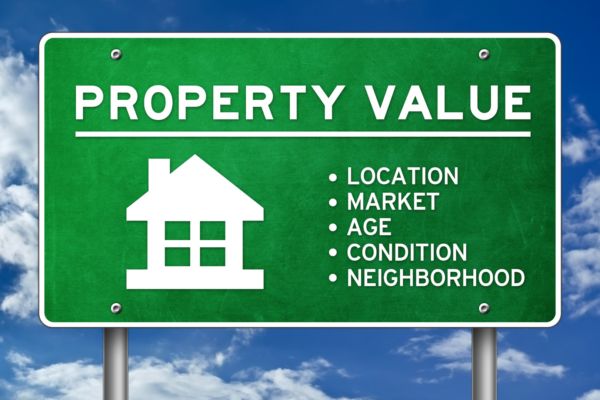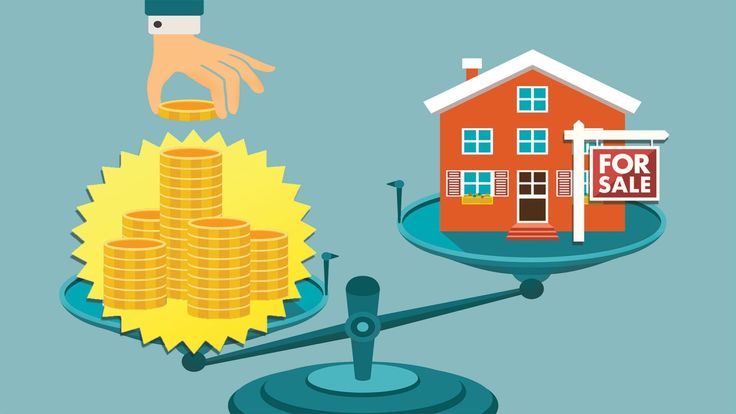
What Factors Influence Property Value, and How Can You Evaluate Them?
Property value is the cornerstone of real estate investing, buying, and selling. Whether you’re a first-time buyer, a seasoned investor, or a homeowner considering a sale, understanding what determines property value is crucial. Beyond location, numerous factors contribute to a property’s worth, from market trends and economic indicators to specific property characteristics.
In this guide, we’ll examine the primary factors influencing property value and provide actionable methods for evaluating them. Let’s explore how you can make smarter real estate decisions.
Key Factors Influencing Property Value
- Location, Location, Location
Location is one of the most significant determinants of property value—it’s the mantra of real estate for a reason. But what makes a location desirable?
- Proximity to Amenities: Properties near schools, hospitals, shopping centers, and parks tend to have higher values.
- Neighborhood Safety: Low crime rates can boost demand and, consequently, property prices.
- Accessibility: Easy access to public transport, highways, and major business hubs increases a property’s appeal.
- Future Developments: Planned infrastructure or commercial projects can raise property values as they make the area more attractive.
Example: A suburban home near a top-rated school district will typically command a higher price than a similar home in a less sought-after school zone.
- Property Size and Usable Space
Size matters, but so does how that space is used.
- Total Square Footage: Larger properties generally have higher market values, but the distribution of this space is equally important.
- Usable Living Space: Open floor plans, well-laid-out rooms, and functional areas like finished basements or attics add significant value.
- Outdoor Space: Properties with landscaped yards, patios, or balconies are often more desirable, especially in urban settings.
- Property Condition and Age
A property’s age and condition can either add to or detract from its value.
- Modern Features: Newer homes with updated systems (HVAC, plumbing, electrical) and energy-efficient appliances are highly valued.
- Maintenance and Repairs: Homes in good condition, with no structural or cosmetic issues, appeal more to buyers.
- Historical Charm: Older homes with unique architectural features can command a premium, especially if they’ve been well-preserved or restored.
- Market Conditions
The broader real estate market significantly influences individual property values.
- Buyer’s Market: When there are more homes for sale than buyers, prices may drop, giving buyers more negotiating power.
- Seller’s Market: High demand and limited supply often lead to increased property values.
- Economic Indicators: Factors like employment rates, inflation, and consumer confidence also impact property demand and value.
- Comparable Sales (Comps)
One of the most reliable indicators of property value is the sale price of similar properties in the area.
- Criteria for Comparables: Properties with similar square footage, age, condition, and features in the same neighborhood provide a benchmark for market value.
- Timeframe: Recent sales (typically within the last six months) are more relevant as market conditions can change rapidly.
- Supply and Demand Dynamics
Basic economics plays a vital role in property valuation.
- High Demand, Low Supply: Leads to competitive bidding, driving up prices.
- High Supply, Low Demand: Results in lower property values, giving buyers the upper hand.
Example: A beachfront property in a limited market will likely see higher demand and value than an inland property with ample availability.

- Interest Rates
Interest rates directly impact a buyer’s ability to afford a property.
- Lower Interest Rates: Reduce borrowing costs, increase affordability, and boost demand, which can drive up property values.
- Higher Interest Rates Have the opposite effect, limiting buyers’ purchasing power and potentially lowering property values.
- Neighborhood Trends and Developments
The future potential of a neighborhood often shapes property values.
- Gentrification: As neighborhoods evolve and attract higher-income residents, property values typically rise.
- Community Enhancements: New parks, retail centers, or cultural landmarks can significantly boost the desirability and value of nearby properties.
- Curb Appeal
First impressions matter. A well-maintained exterior can increase property value by making a strong initial impact.
- Landscaping: A manicured lawn, vibrant flowers, and well-placed trees can elevate a home’s aesthetic and value.
- Exterior Condition: Fresh paint, a clean facade, and modern fixtures like updated lighting or a new front door add to curb appeal.
How to Evaluate Property Value
- Comparative Market Analysis (CMA)
A CMA involves comparing your property to recently sold properties in the same area. Real estate agents often use CMAs to estimate market value by analyzing factors such as size, condition, and location.
Tip: When using a CMA, focus on properties that closely match yours in terms of key features to get the most accurate estimate.
- Professional Appraisal
Appraisals provide an unbiased, professional evaluation of a property’s value. Appraisers consider:
- The property’s physical condition.
- Comparable sales.
- Market trends and location.
When to Use: Appraisals are often required during mortgage approval but can also be valuable for pricing decisions before listing a property.
- Automated Valuation Models (AVMs)
Online tools like Zillow’s Zestimate use algorithms to estimate property values based on public data.
Pros:
- Quick and convenient.
- Offers a ballpark figure for market value.
Cons:
- It may need more accuracy, especially for unique properties or rapidly changing markets.
- Income Approach for Investment Properties
For rental properties, the income approach evaluates value based on expected income. This method considers:
- Net Operating Income (NOI): Rental income minus operating expenses.
- Capitalization Rate (Cap Rate): Determines the property’s potential return on investment.
Example: A property generating $30,000 in annual NOI with a market cap rate of 5% would have an estimated value of $600,000.
- The Cost Approach
This method is used primarily for new or unique properties. It evaluates the cost to replace or reproduce the property, factoring in depreciation for older structures.
Conclusion
Understanding the factors that influence property value is key to making informed real estate decisions. From location and market trends to specific property features, each element plays a crucial role in determining worth. By using evaluation methods like CMAs, appraisals, and the income approach, you can accurately assess property value, ensuring your investments are sound and profitable.
Whether you’re buying, selling, or investing, staying informed about these factors will help you navigate the real estate market with confidence and maximize your returns.



